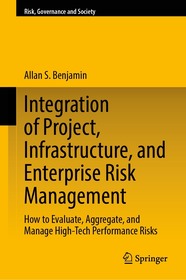
Geospatial Techniques in Climate Change Monitoring and Environmental Mapping
Advances and Applications
Sorozatcím: Developments in Weather and Climate Science; 10;
-
10% KEDVEZMÉNY?
- A kedvezmény csak az 'Értesítés a kedvenc témákról' hírlevelünk címzettjeinek rendeléseire érvényes.
- Kiadói listaár EUR 140.99
-
58 475 Ft (55 691 Ft + 5% áfa)
Az ár azért becsült, mert a rendelés pillanatában nem lehet pontosan tudni, hogy a beérkezéskor milyen lesz a forint árfolyama az adott termék eredeti devizájához képest. Ha a forint romlana, kissé többet, ha javulna, kissé kevesebbet kell majd fizetnie.
- Kedvezmény(ek) 10% (cc. 5 848 Ft off)
- Kedvezményes ár 52 628 Ft (50 122 Ft + 5% áfa)
Iratkozzon fel most és részesüljön kedvezőbb árainkból!
Feliratkozom
58 475 Ft

Beszerezhetőség
Még nem jelent meg, de rendelhető. A megjelenéstől számított néhány héten belül megérkezik.
Why don't you give exact delivery time?
A beszerzés időigényét az eddigi tapasztalatokra alapozva adjuk meg. Azért becsült, mert a terméket külföldről hozzuk be, így a kiadó kiszolgálásának pillanatnyi gyorsaságától is függ. A megadottnál gyorsabb és lassabb szállítás is elképzelhető, de mindent megteszünk, hogy Ön a lehető leghamarabb jusson hozzá a termékhez.
A termék adatai:
- Kiadó Elsevier
- Megjelenés dátuma 2025. november 1.
- ISBN 9780443363962
- Kötéstípus Puhakötés
- Terjedelem300 oldal
- Méret 235x191 mm
- Súly 450 g
- Nyelv angol 700
Kategóriák
Hosszú leírás:
Geospatial Techniques in Climate Change Monitoring and Environmental Mapping: Advances and Applications, Volume Ten delves into the novel methods and applications of remote sensing in climate-change studies. The book begins by exploring climate observation and monitoring, consolidating remote sensing data systems for environmental mapping, and tracking air pollution using remote sensing data. The volume covers the use of remote sensing data for monitoring and predicting climate change, characterizing land changes with climate time series data, and tracking climate change and tropical cyclones with geospatial techniques.
It also discusses the system dynamics model of economic development and climate change, as well as climate change mitigation, adaptation, and future directions. Additionally, it addresses climate modeling, validation, uncertainty mapping, and the application of remote sensing data in government climate policies and sustainable risk reduction approaches for global climate change issues.
Members of the Royal Meteorological Society are eligible for a 35% discount on all Developments in Weather and Climate Science series titles. See the RMetS member dashboard for the discount code.
- Integrates the latest advancements in sensor technologies and data analysis methods, offering readers insights into the management of climate risks and hazards as well as adaptation strategies
- Provides an interdisciplinary understanding of climate change challenges and solutions by gathering high-quality contributions from scientific, social, economic, political, and cultural perspectives
- Examines potential responses to climate change hazards and how to implement strategies in various sectors, considering vulnerability and exposure factors and addressing the social, economic, political, and cultural dimensions of climate change
Tartalomjegyzék:
1. Frontier technology and application of remote sensing in climate change
2. Climate observation and monitoring
3. Consolidation of remote sensing data systems in environmental mapping
4. Urban structure and remote sensing data of climate change context
5. Tracking of air pollution by remote sensing data
6. Using remote sensing data to monitor and predict climate change
7. Pre-processing or fusion of time series climatic data
8. Mapping, monitoring, and characterization of land change with climate time series data
9. Recent trend of Climate Change and Tropical Cyclones using Geospatial technique
10. System dynamics model of economic development and climate change
11. Climate change mitigation, adaptation, and future directions
12. Climate modelling and validation
13. Climate uncertainty Mapping
14. Visualization and communication of climate risks and its impact on environment
15. The guiding role of the application of remote sensing data in government climate policies
16. Climate change and its vulnerability spatial mapping
17. Sustainable approaches for risk reduction of global climate change issues






